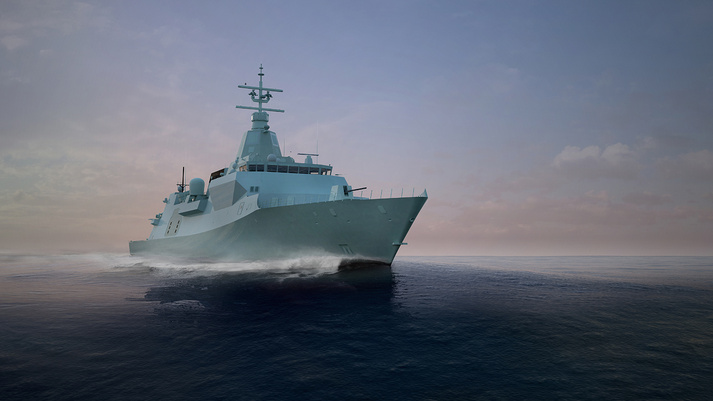By Leo Ryan, Editor
The latest disclosures show that costs are soaring way beyond original estimates for Ottawa’s multibillion dollar program to build new ships for the Royal Canadian Navy and the Canadian Coast Guard. It all points to difficult political decisions ahead for the government of Prime Minister Trudeau.
First came the disclosure that the federal procurement department quietly revealed that it plans to pay nearly C $1 billion to build a new ocean research vessel for the Coast Guard. Its initial cost was priced at one tenth that amount.
The department had posted the new cost online last Friday – on the same day it awarded Vancouver’s Seaspan Shipyards a contract of $453.8 million to enable the company to transition the offshore oceanographic science vessel (OOSV) project from the design to the full construction phase. Delivery is slated for 2024 to replace the CCGS Hudson, the Coast Guard’s oldest science ship.
Then, on Wednesday this week Canada’s parliamentary budget officer (PBO), Yves Giroux, estimated the Navy’s future series of 15 frigates could cost at least $77.3 billion, or $17 billion more than an original federal estimate. The unit cost of over $5 billion could rise further should more setbacks hit the delay-plagued program.
The federal government is basing the new surface combatants on the design of the British Type 26 frigate.
The House of Commons government operations committee asked the budget office to calculate the costs of other designs – namely the FREMM multi-mission frigate chosen by our neighbors to the South, and another British warship, Type 31E. While Canada could save money by dropping the existing programs and switching to other designs, the production timeline would be pushed back roughly four years, according to Mr. Giroux.
The budget office calculates that scrapping the existing program and moving to the Type 31 frigate would cost $27.5 billion. And the cost of acquiring 15 FREMM vessels is put at $71 billion – not far from the price of the present program, but representing a savings nevertheless.
Last fall, the Department of National Defence (DND) maintained it could build the 15 Type 26 frigates, under contract with Irving Shipbuilding and Lockheed Martin Canada, for up to $60 billion.
In a statement issued on February 24, the DND stressed the decision to choose the Type 26 design was based on its capabilities.
“As the PBO noted,” stated the DND, “other design options they examined would have ‘more limited’ and ‘modest’ capabilities than our selected design. These reductions would impede the ability to execute the assigned roles and missions to keep Canadians safe both at home and abroad.”
Meanwhile, Karen Hogan, Canada’s Auditor General, today issued critical comments on the performance of the National Shipbuilding Strategy as part of a report assessing various government departments.
“Overall, we found that during our audit period, the National Shipbuilding Strategy was slow to deliver the combat and non-combat ships that Canada needs to meet its domestic and international obligations for science and defence,” Ms.Hogan declared in an opening statement in Ottawa.
“The delivery of many ships had been significantly delayed. Further delays could result in several ships being retired before their replacements are operational.
“National Defence, Fisheries and Oceans Canada, Public Services and Procurement Canada and Innovation, Science and Economic Development Canada reacted to issues impacting the timely delivery of ships. They made key decisions during the audit so as to improve the prospects of timely future deliveries.
“That said, I am still concerned that the Strategy has been slow to deliver. Considering the unknown impact of the COVID-19 pandemic on work in departments and shipyards, and with the bulk of new ships yet to be built, departments need to look for opportunities to further improve how they manage risks and contingencies.”
(photo: artist rendering of British Type 26 frigate)





